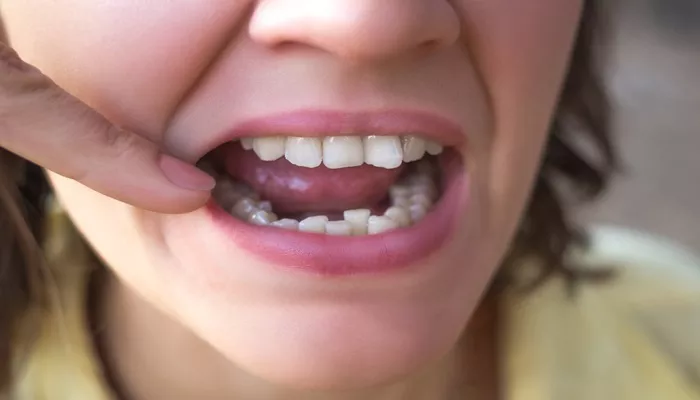Having holes or gaps between your teeth can be a cosmetic concern and may also lead to oral health issues such as food impaction, plaque buildup, and gum disease. Fortunately, modern dentistry offers multiple solutions to address this problem. In this article, we will explore the causes of holes in between teeth and discuss various treatments to eliminate them effectively.
Understanding the Causes of Holes in Between Teeth
Before addressing the problem, it is essential to understand the underlying causes. Holes or gaps in between teeth can result from several factors:
1. Tooth Decay (Cavities)
Cavities that form between teeth are a common reason for the appearance of holes. These are often caused by poor oral hygiene, sugary diets, and bacterial buildup, leading to enamel erosion and decay.
2. Gum Disease (Periodontitis)
Advanced gum disease can cause the gums to recede, leading to spaces between teeth. As the supporting bone structure weakens, teeth may shift, creating gaps.
3. Natural Spacing and Genetics
Some people naturally have gaps between their teeth due to genetics. This condition, known as diastema, can be hereditary and may not necessarily be linked to oral health issues.
4. Tooth Loss
Missing teeth can lead to shifting of the remaining teeth, creating spaces over time. When a tooth is lost, the neighboring teeth may move toward the empty space, resulting in holes between them.
5. Improper Brushing and Flossing
Using incorrect brushing or flossing techniques can lead to gum damage, receding gums, and subsequent spaces between teeth.
6. Age-Related Changes
As we age, our gums and teeth undergo natural changes. The enamel may wear down, and the gums may recede, leading to more noticeable gaps over time.
Professional Treatment Options to Fix Holes in Between Teeth
Depending on the severity of the gaps or holes, different dental treatments can be applied to restore the appearance and functionality of the teeth.
1. Dental Fillings
If the hole between your teeth is caused by decay, a filling can be used to restore the tooth structure. Dentists use composite resin to fill cavities and close small gaps caused by minor decay.
2. Dental Bonding
For minor gaps, dental bonding is an excellent solution. A tooth-colored resin is applied to the teeth and shaped to close the spaces, providing a natural and aesthetically pleasing result.
3. Dental Veneers
Porcelain or composite veneers are thin shells placed over the front surface of the teeth to close gaps. Veneers are particularly useful for cosmetic fixes, providing a durable and long-lasting solution.
4. Orthodontic Treatment (Braces or Invisalign)
For larger gaps or misaligned teeth, orthodontic treatments such as traditional braces or clear aligners (Invisalign) can gradually move the teeth into the correct position, eliminating the holes.
5. Gum Grafting for Receding Gums
If gum recession is the cause of the gaps, a gum grafting procedure can restore lost gum tissue, helping to close the spaces between teeth and improve oral health.
6. Dental Crowns
When the structure of a tooth is compromised due to decay or damage, a dental crown can be placed over the affected tooth to restore its shape and close any gaps.
7. Dental Implants and Bridges
For cases where tooth loss is the cause of gaps, dental implants or bridges can effectively replace missing teeth, preventing further shifting and eliminating the spaces.
Preventive Measures to Avoid Holes in Between Teeth
Prevention is always better than treatment. To reduce the risk of developing holes or gaps between your teeth, follow these essential oral care practices:
1. Maintain Proper Oral Hygiene
Brush your teeth twice daily using fluoride toothpaste.
Use dental floss or interdental brushes to clean between teeth.
Rinse with an antibacterial mouthwash to prevent plaque buildup.
2. Visit Your Dentist Regularly
Schedule dental checkups at least twice a year.
Get professional cleanings to remove tartar and plaque.
Address any early signs of cavities or gum disease promptly.
3. Avoid Harmful Oral Habits
Avoid using your teeth as tools (e.g., opening bottle caps).
Do not bite on hard objects like ice or pens.
Reduce consumption of sugary and acidic foods that erode enamel.
4. Use Orthodontic Retainers (if necessary)
If you have had orthodontic treatment, wearing retainers as prescribed by your dentist can help maintain tooth alignment and prevent gaps from forming again.
5. Address Gum Recession Early
If you notice gum recession, consult a dentist early to explore treatments like gum grafting or deep cleaning to prevent further damage.
Conclusion
Holes in between teeth can be a cosmetic and functional concern, but with modern dental treatments, they can be effectively addressed. Whether the gaps are caused by cavities, gum disease, or natural spacing, there are numerous professional solutions to restore your smile.Additionally, maintaining good oral hygiene and visiting your dentist regularly can prevent the problem from worsening. If you are experiencing holes in between your teeth, consult a dental professional to determine the best treatment option for your specific case.

